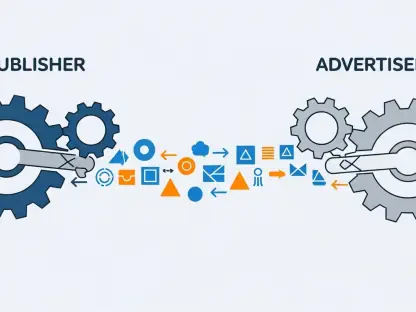In an era dominated by growing environmental awareness and tightening regulatory frameworks, tech firms around the globe face intensified scrutiny. As businesses scale new heights in innovation, the double-edged sword of sustainability and regulatory compliance presents unique challenges, making it essential for companies to strategically navigate these intricate landscapes.
The High-Stakes Game: Compliance and Sustainability
Why should tech giants prioritize the twin goals of sustainability and compliance? With increasing regulatory pressures and growing environmental concerns, these issues have moved to the forefront of corporate agendas. Governments and watchdogs are tightening restrictions around potentially harmful practices, while consumers demand greater transparency and ethical considerations in their preferred brands. These dynamics necessitate a strategic approach, pushing companies to strike a delicate balance between growth and responsibility.
Strategic Models in the Limelight
Recent developments across major tech corporations reveal varied strategies employed to tackle these dual challenges. Corning stands out by addressing antitrust issues, committing to the European Commission that it will revoke exclusive agreement clauses from its dealings for the next four years. This move sets a precedent in regulatory compliance, emphasizing ethical business practices across global markets.
Parallelly, CISPE, the European cloud service group, secured an agreement with Microsoft, enabling greater flexibility in cloud offerings. By allowing access to Microsoft’s products without additional data sharing, CISPE underscores the importance of data privacy in modern businesses. Similarly, MTN, a leading telecommunications firm in South Africa, demonstrates commitment to ethical practices by adhering to global sanctions, refraining from capitalizing on its investment in Iran since 2018.
Data centers, too, have been setting examples, with AtlasEdge spearheading the shift to renewable energies. Recently completing a sustainable data center in Germany, the company’s innovations aim to offer scalable, eco-friendly solutions while reducing carbon footprints.
Lastly, Openreach in the UK is actively pursuing green initiatives through its recycled materials projects. Collaborating with industry giants like Nokia, Openreach is scaling the use of recycled plastics, underscoring commitment to sustainability while addressing broader environmental challenges head-on.
Expert Perspectives and Industry Narratives
Industry leaders emphasize the symbiotic relationship between sustainability and compliance. Quotes from sector insiders highlight the balance of these facets as essential for modern business success. Moreover, case studies from corporations that have triumphed or struggled with these challenges offer valuable lessons for the broader tech community.
These narratives highlight not only the complexities involved but also the resourcefulness and innovation encouraged by such hurdles. For instance, firms that have seamlessly integrated green tech initiatives with existing infrastructures reveal that difficult paths often lead to some of the most rewarding successes.
Practical Steps for Integration
For tech companies aiming to bridge the gap between compliance and sustainability, actionable strategies offer a path forward. A comprehensive framework that simultaneously assesses regulatory obligations and green initiatives can streamline this integration. By identifying and prioritizing scalable solutions, firms can navigate these challenges without compromising growth.
The effective use of analytics tools to track environmental impact, alongside regular audits for compliance, supports these efforts. Moreover, promoting an organizational culture that values sustainability intrinsically can rally employees around these goals, ensuring long-term success.
In Retrospect: The Road Ahead
The journey toward compliance and sustainability in the tech world is marked by both challenges and breakthroughs. These dual pursuits require a nuanced and adaptive approach, with successful ventures showcasing resilience, innovation, and strategic foresight. As technology continues to evolve, the focus must remain on embedding these principles deeper within organizational DNA. Looking ahead, companies are expected to not only uphold but enhance these standards, turning challenges into opportunities for sustainable growth.









